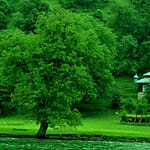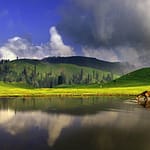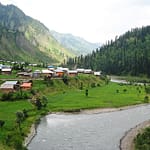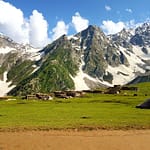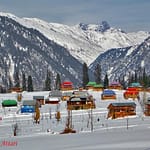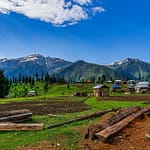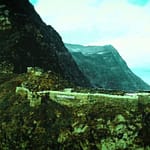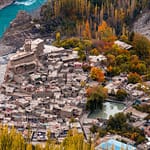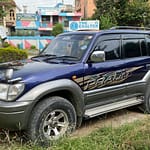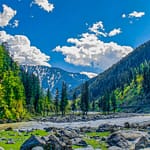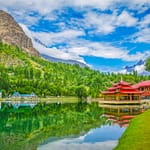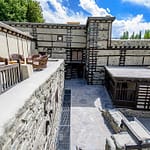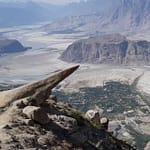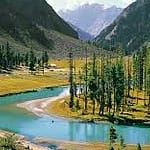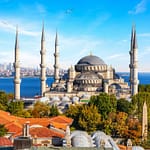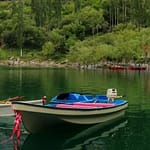Hunza valley; a must visit valley of Pakistan
The Hunza Valley is a mountainous region located in the northern part of the Gilgit-Baltistan region of Pakistan. It is formed by the Hunza River, and it borders Ishkoman to the northwest, Shigar to the southeast, Afghanistan’s Wakhan Corridor to the north, and China’s Xinjiang region to the northeast. The Hunza Valley is renowned for its breathtaking natural beauty and stunning landscapes, making it one of the most popular tourist destinations in Pakistan.
In this blog, we will take a closer look at the Hunza Valley and explore its history, culture, and natural beauty.
History
The Hunza Valley has a rich history that dates back thousands of years. It was once a part of the ancient Silk Route that connected China with the Mediterranean. The valley was ruled by a powerful dynasty known as the Mirs of Hunza, who were renowned for their bravery and valor. The Mirs of Hunza were a popular and respected ruling family that governed the valley for centuries.
During the British colonial era, the Hunza Valley became an important trading post, and the British established a political agency in the region to maintain control over the area. In 1947, when India was partitioned, the Hunza Valley became a part of Pakistan.
Culture
The Hunza Valley is home to a diverse mix of ethnic groups, including the Burusho, Wakhi, and Shina people. The Burusho people, also known as the Hunzakuts, are the dominant ethnic group in the region. They are renowned for their longevity, and their lifestyle is believed to be a major factor in their long life expectancy. The Burusho people follow the Ismaili sect of Islam and are known for their hospitality and friendliness.
The Wakhi people are another ethnic group that lives in the Hunza Valley. They speak the Wakhi language and are predominantly Shia Muslims. The Wakhi people are famous for their woolen textiles and handicrafts.
The Shina people are a third ethnic group that resides in the Hunza Valley. They speak the Shina language and are predominantly Sunni Muslims. The Shina people are known for their traditional music and dance.
The people of Hunza Valley are proud of their heritage and culture and are always willing to share it with visitors.
Natural Beauty
The Hunza Valley is renowned for its natural beauty and stunning landscapes. It is surrounded by towering mountain peaks, including Rakaposhi (7,788 m), Ultar Sar (7,388 m), Bojahagur Duanasir II (7,329 m), Diran peak (7,266 m), Spantik (7027m), Ghenta Peak (7,090 m), Hunza Peak (6,270 m), Darmyani Peak (6,090 m), and Bublimating (Ladyfinger Peak) (6,000 m). The Hunza River flows through the valley, adding to the region’s beauty.
The best time to visit the Hunza Valley is from April to October, when the weather is the most favorable. During this period, the valley is lush green, and the mountain peaks are visible in all their glory. The autumn season is also a popular time to visit the valley, as the foliage changes color, creating a stunning visual spectacle.
One of the most popular attractions in the Hunza Valley is the Altit Fort, which was built over 800 years ago. The fort is an architectural marvel and is a testament to the region’s rich cultural heritage. The fort has been restored and converted into a museum, showcasing the history and culture of the Hunza Valley.
Another popular attraction in the Hunza Valley is the Baltit Fort. It was built over 700 years ago and is a
spectacular example of the traditional architecture of the region. The fort has been designated a UNESCO World Heritage Site and attracts thousands of visitors every year.
The Hunza Valley is also famous for its apricot orchards, which cover the entire region. The apricots from the Hunza Valley are renowned for their sweetness and are exported all over the world. Visitors to the valley can sample the delicious apricots and other locally grown fruits and vegetables.
The Hunza Valley is also a popular destination for trekking enthusiasts. There are several trekking routes in the valley that offer stunning views of the surrounding mountains and valleys. The most popular trekking routes in the region include the Baltoro Glacier trek, the Batura Glacier trek, and the Rakaposhi base camp trek.
In conclusion, the Hunza Valley is a truly breathtaking destination that offers visitors a unique blend of history, culture, and natural beauty. The valley is home to some of the highest mountain peaks in the world and is a popular destination for trekking enthusiasts. The region’s rich cultural heritage is evident in the stunning architecture of the Altit and Baltit forts, and the locals are friendly and welcoming. If you are looking for a destination that offers a unique travel experience, then the Hunza Valley should definitely be on your list. Plan your trip today and discover the beauty of this incredible region for yourself!
Top Places to Visit during Your Hunza Valley Trip
1. Hunza Valley
The valley surrounding the Hunza River is home to some of the world’s best treks, with trail lengths ranging from a few hours to several days. Combine nature with history with a steep walk up to the 800-year-old Baltit Fort, and explore the magical villages, interact with the hospitable locals, and score the freshest apricots in the valley. Hunza Valley is exceptionally beautiful during the cherry blossom season in spring and for the changing colors of fall. Summer is rainy season and winter can get quite cold.
2. Attabad Lake
Attabad Lake is a lake located in the Gojal region of Hunza Valley in Gilgit−Baltistan, Pakistan. It was created in January 2010 as the result of a major landslide in Attabad. The lake has become one of the biggest tourist attractions in Gilgit−Baltistan, offering activities like boating, jet-skiing, fishing and other recreational activities.
3. Altit Fort
Altit Fort is an ancient fort in the Altit town in the Hunza valley in Gilgit Baltistan, Pakistan. It was originally home to the hereditary rulers of the Hunza state who carried the title of ‘Mir‘, although they moved to the somewhat younger Baltit fort nearby three centuries later. Altit Fort and in particular the Shikari tower is around 1100 years old, which makes it the oldest monument in the Gilgit–Baltistan. The fort has received the UNESCO Asia Pacific Heritage Award for Cultural Heritage Conservation in 2011.
The word ‘Altit’ means ‘this side down’ and the area around the fort is inhabited by Burusho people.
4. Baltit Fort
Baltit Fort is a fort in the Hunza valley, near the town of Karimabad, in the Gilgit-Baltistan region of northern Pakistan. Founded in the 8th century CE, it has been on the UNESCO World Heritage Tentative list since 2004. 700-year-old Baltit fort is some of the region’s oldest standing monuments and evidence of the valley’s feudal regime.
5. Khunjrab Pass
Khunjerab Pass is a 4,693-meter-high mountain pass in the Karakoram Mountains, in a strategic position on the northern border of Pakistan and on the southwest border of China. Mutsjliga Pass is a 5,314-meter-high mountain pass at 36.97374°N 75.2973°E near Khunjerab Pass.
6. Gojal Valley
Gojal, also called Upper Hunza, is situated in northwestern Pakistan. It borders China at the Khunjerab Pass, and Afghanistan at the Chapursan valley. In 2019, Gojal Valley became the second Karachukar sub-ivision within the Hunza District. It is geographically the largest subdivision of Gilgit-Baltistan.
7. Hussaini Bridge
The Hussaini Hanging Bridge is 45 kilometers away from Hunza. Stretching over the glacier-fed waters of the Hunza River and linking the rugged faces of the Karakoram Range, the Hussaini Hanging Bridge appears to be no more than a delicate thread.
8. Passu Cones & Glacier
Passu Cones are few pointed peaks in the Karakoram Range that are located East of KKH in Passu / Husseini village areas. The peculiar pointed shape of the numerous peaks located on a single massif and their visibility from most areas in Gulkin, Gulmit, Hussein and Passu areas make them famous.
Passu is a popular tourist destination in Pakistan and all over the world because of its easily accessible sweeping landscapes, and vistas of the 7,478 m (24,534 ft) tall Passu Sar mountain, the Passu Glacier, and Tupopdan 6,106m (20,033 ft).
9. Hooper Glacier
It’s about 45 minutes’ drive from main Hunza city. Mesmerizing giant view of moving glacier, wonderful local jewelry/ornaments and very famous.
It is about 10 km away from Nagar Khas, the principal city of the Nagar Valley. Hopar Valley is home of the Spantik and Hopar (Hopper) glaciers.
10. Shim Shal
Shimshal valley has its largest adventure area in Hunza and is a major attraction for tourists. Shimshal Pass (4,735 m [15,535 ft]) 36°26′0″N 75°41′15″E rises above the village. It lies on the watershed between the Indus River and Tarim River basins, and leads to the valley of the Shimshal Braldu River, a tributary of the Shaksgam River on the border with China.
11. Satrangi Lake
Satrangi Lake is located at a distance of 40 Km from Gilgit city. It takes 2 hours to reach Naltar valley from Gilgit. The best season to visit Naltar Lake Satrangi Lake is May to October.



